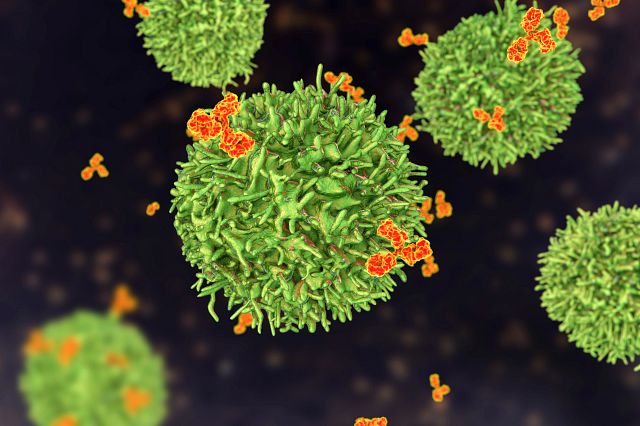The world of biotherapeutics has entered a new era with the emergence of nanobodies—small, single-domain antibodies derived from camelids such as llamas and alpacas. Their compact size, high stability, and remarkable specificity make them ideal candidates for a wide range of biomedical applications. To harness their full potential, researchers and pharmaceutical companies are turning to specialized platforms known as nanobody discovery service providers. These services are revolutionizing the way therapeutic agents are developed, bringing speed, efficiency, and accuracy to antibody discovery workflows.

A nanobody discovery service typically begins by immunizing camelids with the target antigen to generate a robust immune response. From there, specialized labs isolate peripheral blood lymphocytes and construct VHH (variable domain of the heavy chain of heavy-chain antibody) libraries. These libraries are screened using techniques like phage display or yeast display to identify the nanobodies that bind with the highest affinity. With this streamlined and optimized process, a nanobody discovery service accelerates the journey from concept to candidate molecule.
What sets a nanobody discovery service apart from traditional antibody generation methods is its ability to identify single-domain antibodies with unique binding properties. Unlike full-sized antibodies, nanobodies can penetrate tissues more easily and bind to hidden or cryptic epitopes. This opens up new possibilities in diagnostics, targeted therapy, and even drug delivery. By using a professional nanobody discovery service, researchers gain access to this advanced technology without the need to invest heavily in infrastructure or technical expertise.
In recent years, the demand for nanobody discovery service has grown significantly due to its applications in oncology, neuroscience, infectious disease, and inflammatory disorders. For example, nanobodies have shown exceptional potential in cancer immunotherapy by blocking immune checkpoints or delivering toxic payloads directly to tumor cells. A reliable nanobody discovery service allows companies to develop these molecules more efficiently, providing a competitive edge in a rapidly evolving market.
Speed is another major advantage of using a nanobody discovery service. Traditional monoclonal antibody development can take several months or even years. In contrast, nanobody libraries can be constructed and screened within weeks. The reduced size of nanobodies also facilitates easier engineering, humanization, and expression in microbial systems. By choosing an expert nanobody discovery service, companies can reduce time-to-market and respond quickly to emerging health threats.
Moreover, a comprehensive nanobody discovery service offers more than just the initial identification of binders. Many providers include downstream services such as affinity maturation, epitope mapping, and functional characterization. This integrated approach ensures that selected nanobodies are not only specific and high-affinity but also functionally relevant. It’s this full-package solution that makes a nanobody discovery service so valuable to both academic institutions and biotech firms.
Customization is another strong feature of a quality nanobody discovery service. Depending on the client’s needs, service providers can tailor their workflows to target membrane proteins, conformational epitopes, or even post-translational modifications. The versatility of nanobody platforms means they can be adapted for use in imaging, biosensing, and therapeutic modulation. With a nanobody discovery service, clients benefit from an adaptable pipeline designed to meet diverse scientific goals.
For startups and small biotech companies, partnering with a nanobody discovery service is often the most viable path forward. Building in-house capabilities requires significant investment in animals, laboratory facilities, and specialized personnel. A nanobody discovery service eliminates these barriers, offering access to state-of-the-art tools and highly experienced scientists. This levels the playing field, allowing even small teams to pursue cutting-edge research.
As more pharmaceutical companies explore the potential of nanobodies, the value of a trusted nanobody discovery service becomes even more evident. The data generated from these services is often of publication quality, facilitating grant applications, patent filings, and regulatory submissions. In many cases, the nanobody discovery service provider also assists in scale-up production and preclinical testing, making the process as seamless as possible from discovery to development.
Looking ahead, the future of biologics will be shaped in large part by the innovation coming from nanobody discovery service providers. As new technologies like AI-driven binder selection, cryo-electron microscopy, and high-throughput screening are integrated into discovery pipelines, the quality and speed of nanobody identification will continue to improve. This evolution will empower researchers with even more precise tools for disease intervention.
In conclusion, a nanobody discovery service is no longer a luxury—it’s a necessity for any research team aiming to stay at the forefront of biologic drug development. Whether the goal is to create a novel therapeutic, a diagnostic tool, or an innovative research probe, a professional nanobody discovery service offers the expertise, technology, and speed required to turn potential into reality. As the world continues to seek faster, more effective treatments, these services are proving to be indispensable partners in biomedical innovation.
